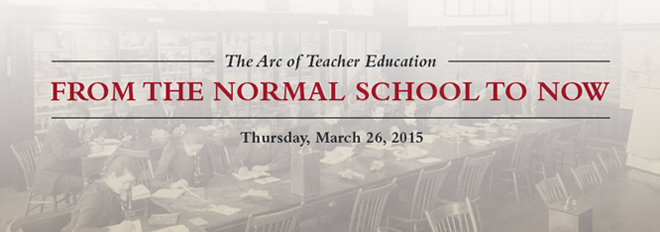Presentation Title
The Philippine Normal School During U.S. Colonial Rule, 1901-1916
Session Name
Concurrent Session 2. Exporting the Normal School Model
Start Date
26-3-2015 2:00 PM
End Date
26-3-2015 3:30 PM
Abstract
In 1901, the U.S. colonial government in the Philippines established a free, secular school system with English as the only language of instruction. The Philippine Commission recruited several hundred American educators to teach in and administer the colonial school system. Yet from its inception, the Department of Education sought to train Filipinos to eventually assume all teaching positions.
The Philippine Normal School was established in 1901 in Manila and graduated its first class in 1903. For much of its first decade, it served as both a teacher preparation school and a high school, offering pedagogy classes as well as preparatory classes in medicine, law, engineering, and agriculture. In 1909, the Normal School was reorganized to divide teacher training from the academic course of study. In the new Normal School, an industrial department was established, the training department was expanded, and the curriculum was narrowed to only include subjects “directly related to the work of a teacher in the Philippines.”[1]
This paper will examine specific aspects of the new curriculum, the justifications for the changes, their impact on public school teaching and learning, and the response of Filipino teachers and other stakeholders. The longer manuscript that this paper is taken from seeks to incorporate the colonial education system in the Philippines into the historiography of U.S. education. A central argument it makes is that teacher education in the Philippines cannot be understood outside of the context of debates among U.S. educators in the early twentieth century. It also asserts that the colonial education system in the Philippines is relevant for understanding the development of teacher training programs and public school systems in the ‘domestic’ U.S. in this time period.
[1] A.W. Cain, “The Normal School from 1910 to the Present,” Philippine Education, Vol. IX, No. 3 (1912): 96.
The Philippine Normal School During U.S. Colonial Rule, 1901-1916
In 1901, the U.S. colonial government in the Philippines established a free, secular school system with English as the only language of instruction. The Philippine Commission recruited several hundred American educators to teach in and administer the colonial school system. Yet from its inception, the Department of Education sought to train Filipinos to eventually assume all teaching positions.
The Philippine Normal School was established in 1901 in Manila and graduated its first class in 1903. For much of its first decade, it served as both a teacher preparation school and a high school, offering pedagogy classes as well as preparatory classes in medicine, law, engineering, and agriculture. In 1909, the Normal School was reorganized to divide teacher training from the academic course of study. In the new Normal School, an industrial department was established, the training department was expanded, and the curriculum was narrowed to only include subjects “directly related to the work of a teacher in the Philippines.”[1]
This paper will examine specific aspects of the new curriculum, the justifications for the changes, their impact on public school teaching and learning, and the response of Filipino teachers and other stakeholders. The longer manuscript that this paper is taken from seeks to incorporate the colonial education system in the Philippines into the historiography of U.S. education. A central argument it makes is that teacher education in the Philippines cannot be understood outside of the context of debates among U.S. educators in the early twentieth century. It also asserts that the colonial education system in the Philippines is relevant for understanding the development of teacher training programs and public school systems in the ‘domestic’ U.S. in this time period.
[1] A.W. Cain, “The Normal School from 1910 to the Present,” Philippine Education, Vol. IX, No. 3 (1912): 96.
